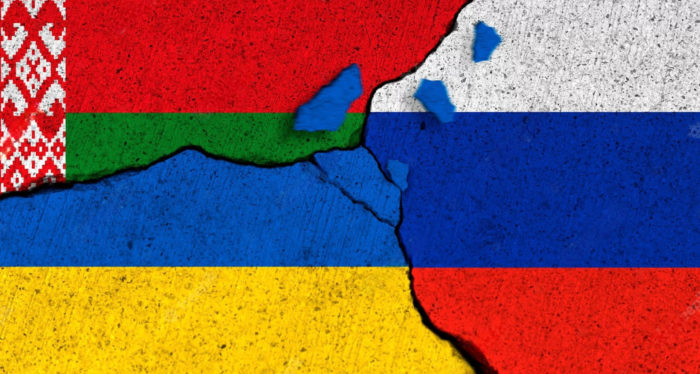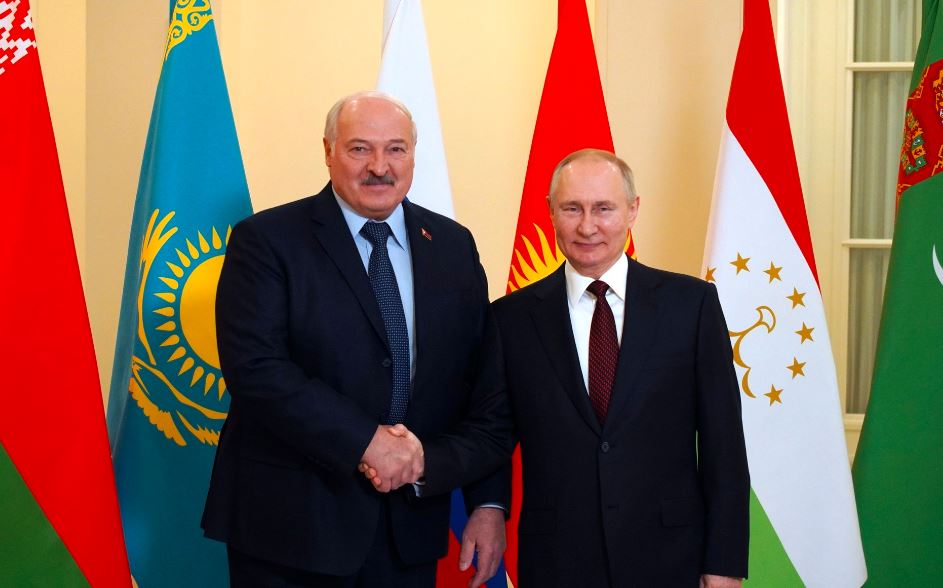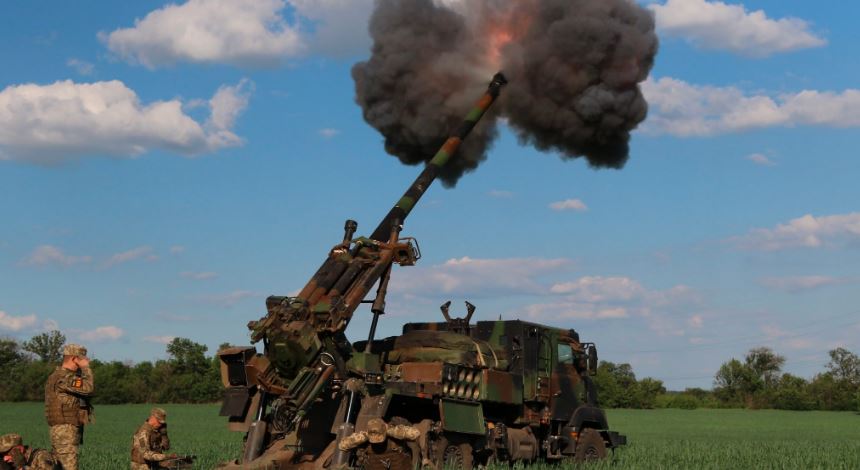In September 2023, Russia and Belarus are scheduled to carry out the joint military exercises Union Shield 2023, aimed at improving the interoperability of the two countries’ military command and control. And preparations for the operational drill on Belarusian soil have already begun. On 31 January, the Joint Command of the Regional Grouping of Russian and Belarusian Forces began its staff training.
“The goal of this training is to improve the joint use of troops based on experiences from the armed conflicts of recent years,” as stated at the joint meeting of defense ministries of Belarus and Russia.
This means that both countries militaries must establish a joint decision-making processes in the event that the combined forces join the war in Ukraine.
However, this is only part of a set of planned measures to build up defense and military cooperation between Russia and Belarus, which sharply intensified after Moscow unleashed its full-scale war against Ukraine on 24 February 2022. Although, at the moment, Belarus is not seen as a direct participant in the war, during the re-invasion, Russian troops crossed into Ukraine precisely from the Belarusian border. Additionally, material and technical assistance have been provided to the Russian forces stationed on Belarusian territory. For example, newly mobilized Russian troops are being trained in Belarus before their deployment to Ukraine, and wounded Russian soldiers fill Belarusian hospitals. Minsk has also provided Russian air power full access to the country’s military airfields. At some level, Belarusian President Alyaksandr Lukashenka has acknowledged Belarus’s role in the war while stipulating that this does not imply sending Belarusian forces into active fighting.
Kremlin’s emissary Lukashenka catalyzes axis of evil around Belarus
To say the least, such uncertainty regarding Belarus’s role in the war has created the constant threat of provocation on the borders with Latvia, Lithuania, and Poland, as Lukashenka has repeatedly claimed that the North Atlantic Treaty Organization (NATO) seeks to attack Russia through Belarus. Furthermore, this outlook limits to a certain extent the maneuvers of Ukrainian forces, pinning part of them on Ukraine’s northern borders. Moreover, on 16 February, Lukashenka declared that the Belarusian army, together with Russian forces, would be ready to invade Ukraine if any foreign troops dare cross into Belarus.
Overall, the presence of a certain contingent of Russian forces on Belarusian soil is ensured on a regular basis within the framework of the Union State Treaty. Constant military exercises of various types provide a vague explanation for this. According to the Belarusian Hajun Project, a group that monitors Belarusian military activity, joint exercises have been ongoing at certain training grounds across Belarus since 29 April 2022, being regularly extended. Given the limited capacity of Russia’s military training grounds, this is a convenient excuse for training freshly mobilized Russian soldiers in Belarus right up until they are deployed to Ukraine.
Furthermore, mounting expectations are being placed on the air component and the development of a joint missile defense system between Russia and Belarus. From 16 January to 1 February, joint military aviation exercises were held in Belarus, involving all available military airfields and training grounds. In June 2022, Russian President Vladimir Putin announced that Russia would transfer Iskander-M tactical nuclear-capable missile systems to Belarus, also vowing to upgrade Belarus’s Sukhoi Su-25 aircraft to be able to carry nuclear missiles.
In August 2022, Lukashenka publicly announced that the upgrade of the Belarusian warplanes’ nuclear capabilities had been completed. This was done in response to the alleged threat posed by the US and NATO, whose bombers are carrying out regular training flights in the region. This process was further developed in December 2022 when Putin stated that it was possible to train Belarusian pilots to fly the upgraded, nuclear-capable jets. On 4 April, Russian Minister of Defense Sergei Shoigu claimed that Belarus already has at its disposal assault aircraft and Iskander-M missile systems capable of delivering nuclear strikes.
Under the pretext of the alleged threats emanating from the Baltic states, Poland and Ukraine, Lukashenka also suggested that Russian strategic bombers should regularly monitor the Belarusian and Union State borders. Such flights were carried out in early November 2021. At that time, two Tu-160 strategic bombers flew test flights over Belarusian territory, imitating the bombing of conventional enemy targets. In addition, Tu-22m3 strategic bombers patrolled Belarusian airspace to test the combat readiness of the Union State’s Combined Regional Air Defense System.
In fact, given current circumstances, various components of the Russian Armed Forces feel at home in Belarus. Thus, the question arises whether these troops would pull out even in the event that they are asked to by Lukashenka, which would be rather unlikely under the auspices of the Union State. In this, one should recall how Moscow dealt with the presence of its Black Sea Fleet in Ukraine’s Crimea. Although the fleet was formally deployed there on a lease basis, Russian military officials never intended to withdraw from the area once the lease’s term expired, and pressure was consistently exerted on the Ukrainian side to further extend the deal.
Practical steps to implement such a scenario could kick off as early as this summer. On 25 March, Putin announced Russia’s plans to deploy tactical nuclear weapons on Belarusian territory, with the storage facility expected to be completed by 1 July. The Kremlin has voiced its intentions to place nuclear arms on Belarusian soil without handing Minsk control over them, though other possibilities have been presented, including the “double-button” mechanism in which both Minsk and Moscow would have to provide approval. Moscow has argued that this is in response to the UK’s plans to send Ukraine depleted uranium-core artillery rounds, though these munitions are not classified as nuclear weapons. Moreover, in 2018, Russia ironically upgraded its T-80BVM tanks to be able to fire similar depleted uranium-core munitions.
However, this is another opportune moment for the Kremlin to rail against the threat NATO allegedly poses. Since 2022, Lukashenka has been considering the possible deployment of Russian nuclear weapons on Belarusian territory. According to the Belarussian Foreign Ministry, these steps will be taken due to “unprecedented pressure” from NATO and the EU.
In fact, according to recently leaked documents, the Kremlin allegedly seeks to secure control over both Ukraine and Belarus. While the scenario of the so-called “special military operation” was chosen for Ukraine, a soft takeover based on increasing economic and military dependence was reportedly designed for Belarus. However, thus far, Lukashenko has managed to retain some room for geopolitical maneuver and not become directly involved in the war in Ukraine. Nevertheless, as Putin has become increasingly cornered due to the failures in Ukraine, the plan drafted for Belarus may indeed be in motion, as Moscow consistently attempts to limit Lukashenka’s room for maneuver.
Related:
- Moscow’s greatest fear about Orthodox Church in Belarus may be about to come true
- What Putin wants to do in Ukraine, Belarus and Moldova, he is already implementing in non-Russia’s non-Russian republics, Portnikov says
- What if Russia nukes Ukraine? Military strategist Lawrence Freedman explains
- Ukraine warns Lukashenka may join war as Belarus partisans sabotage rail connections
- Russia’s military exercise in Belarus prepares for war








